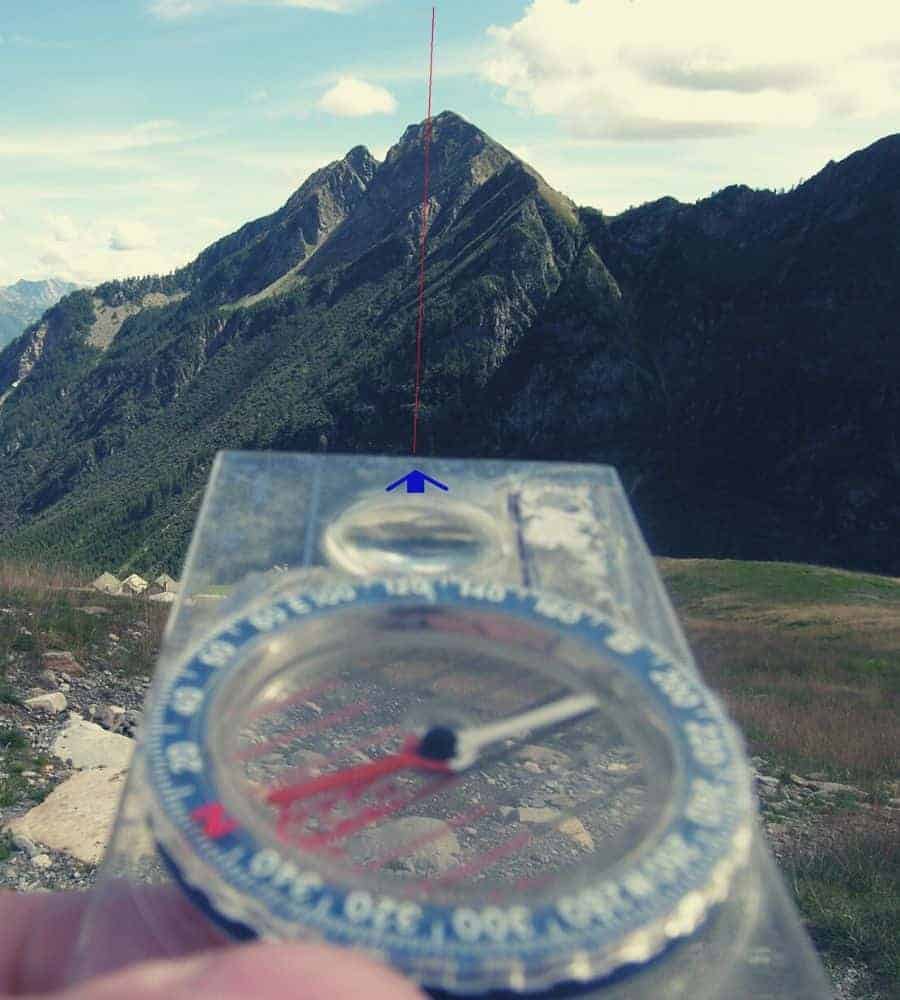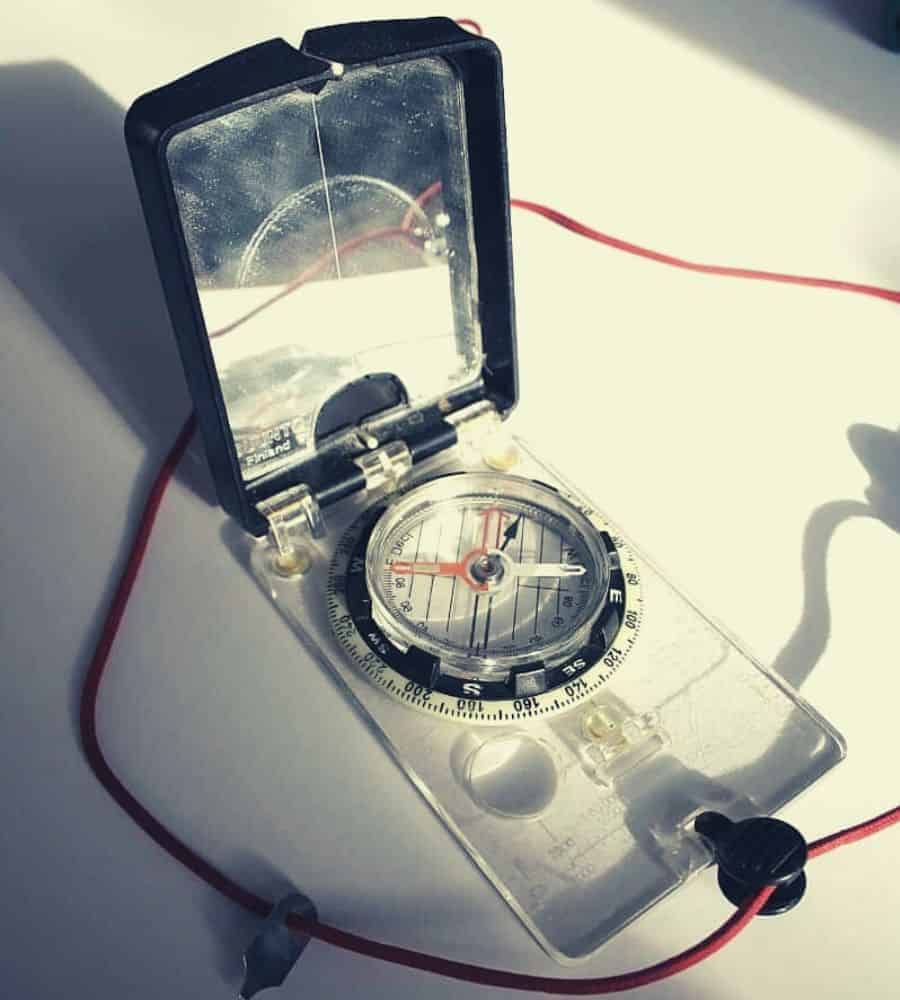Over time, even the best hiking compass can begin to give errant readings due to improper storage and magnetic interference caused by other metal objects or owing to reversed polarity.
All of these problems, gladly, have an easy fix, and in the following article, we offer a simple, step-by-step guide to show you how it’s done.
The two most common compass problems are air bubbles inside the compass housing and reversed polarity.
Ready to learn how to fix a compass? Let’s do it!
Two Common Compass Issues
The two most common compass problems are air bubbles inside the compass housing and reversed polarity.
Air Bubbles
This frequent compass ailment usually occurs due to pressure changes at higher altitudes or your compass being exposed to frigid temperatures. Both of these conditions cause the liquid inside the housing to contract, thereby leaving air bubbles in the unoccupied space.
In most cases, air bubbles will disappear when you return to sea level or warmer temperatures. Still, larger bubbles are often stubborn and compromise the compass’s ability to provide accurate readings by interfering excessively with the needle. In such cases, sadly, your only recourse is to throw the compass out.
Reversed Polarity
This is probably the second most commonly cited magnetic compass problem. It occurs when a compass is brought into close contact with another magnet that causes the north-pointing compass needles to give a reading that is out of alignment with the earth’s magnetic field and Magnetic North.
How to Check if Your Compass’s Polarity Has Been Reversed
You can check the accuracy of your compass’s readings in several ways. The easiest is to identify features on your topographic map on a bearing north of the ground where you stand and—after adjusting for magnetic declination—check that the red needle in your compass does point north. If your compass needle is pointing at easily defined features to the south, then it’s a clear sign that your compass polarity has reversed.

Other methods for checking for reversed polarity include using the sun (which rises in the east, passes through south, and sets in the west, thereby allowing you to determine the other cardinal directions) or the stars.
If you have a friend handy, you can also ask them to point out north with their compass bearing, taking care to ensure your compasses are at least a meter apart, and neither of you is near any metallic objects or magnets that might cause your compasses to give faulty readings. If your compass needle is pointing in the opposite direction to your friend’s, then your compass has reversely polarized.
What Causes Reversed Polarity?
A compass works because its needle is attracted by the magnetism of Earth, which causes it to point to the Earth’s Magnetic North Pole. The magnetic abilities of a compass’s needle, however, can be compromised by any metallic or magnetic object it comes into contact with or nearby. The most common culprits are car stereo speakers, radios, and even mobile phones. This being so, the best way to avoid reversed polarity is to store your compass away from such items both at home, other items you carry in your backpack, and when in transit to/from.
How to Fix Your Compass & Recalibrate It to the Earth’s Magnetic Field
If you have determined that the polarity in your compass has been reversed, you will need to re-magnetize the compass with a strong magnet.
Here’s how it’s done:
- Place your compass on a flat surface, facing upward, and with the needle floating freely. Get your hands on a rare-earth/neodymium magnet, which can be used to re-magnetize the compass needle and reverse polarity so that your compass needle once again points to Magnetic North.
- Find the “south” end of the magnet by holding one end of the magnet to the side of the compass and determining which side of the magnet the compass needle is attracted to. The north (red) end of the needle will be attracted to the south end of the magnet and vice-versa.
- Next, mark the south end your magnet with an “S” or with a slither of tape, so you know which end is which.
- Now, take the end marked “S” on your magnet and attach it to the edge of the compass with tape and leave it to do its thing for at least half an hour, after which time your compass should be successfully re-magnetized with the north (red) needle oriented toward Magnetic North.
- Before venturing out into the wilds with your newly repaired compass, we recommend conducting a “sense check” by checking off bearings given on your compass with features on a map and in the terrain.

Rounding Up (in the Right Direction)
We hope you found our guide useful, and you now know how to make sure your compass is correctly calibrated. Please feel free to comment below or ask any other questions on navigation or how to use a compass correctly.


Thank you for the explanation. But….. it’s way too much trouble. I think that I’ve decided to throw away my “basic” compass and get a new one. No more trouble. No more thinking “in reverse”.
Peter
Thanks for posting this. I was able to flip my compass with just one pass of the neodymium magnet.
Thank you I found this very useful, although I did not need a neodymium magnet and wait 30 minutes, just 4 or 5.
Why has my Silva marine compass gone so dark that I cannot use it ?
My problem is my compass pointer shows East when I am facing West and shows West when pointing East, North and South are fine. My previous Silva did this, they replaced it with my current compass. I checked it against another compass of mine
Are all compasses correct able I have several bought on tenu that all point different I don’t want an expensive compass just one that’s reliable I have an old Silva starter had it for years just need an other for scouts to practice. Thaks